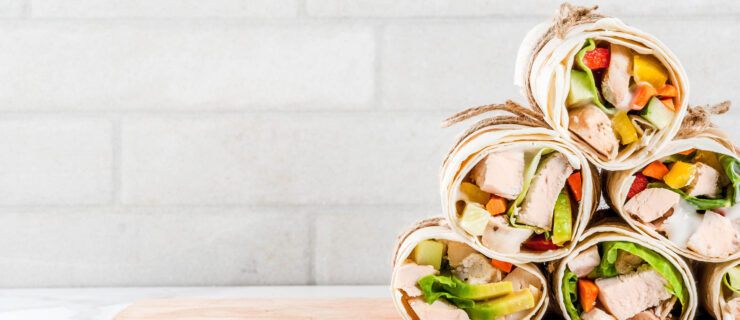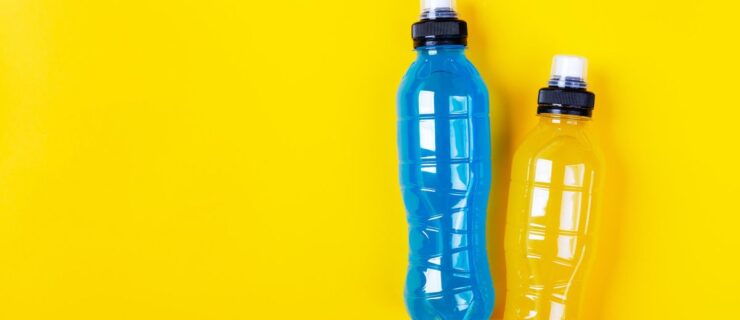Good Foods Gone Bad
Do you think that bread, pretzels and yogurt fit nicely into a healthy diet? Think again. Although they’re low in fat, these foods possess questionable nutritional value. Some are processed and refined, while others lack water and volume—talk about setting yourself up for chronic hunger and energy lows! Here are eight foods that may be counteracting your efforts to become a lean, mean, dancing machine—and some healthful alternatives. (And turn to p. 60 for a list of 10 mighty foods to add to your diet!)
1. White Bread
-
The Dilemma:
It’s doughy, low in fat and high in carbs. What more could you ask for? A lot! White bread has refined written all over it, which means that it will give you a quick energy high followed by a hankering for another carb-loading food. It’s also empty of beneficial proteins, fiber, vitamins and minerals.
-
The Solution:
Choose 100-percent whole-grain bread, cereal and crackers, which will give you energy for hours on end!
2. Bagels
-
The Dilemma:
They’re quick, easy and portable. But these days, bagels are the size of flotation devices, which means they pack in some serious calories, and their lack of fat and protein give these lifesavers minimal staying power. Can you say mid-morning slump?
-
The Solution:
Choose half a whole-grain bagel (rich in protein and fiber), and top it with peanut butter, hummus or low-fat cottage cheese.
3. Cereal Bars
-
The Dilemma:
Cereal bars are an easy grab-and-go item, but nutritionally, most cereal bars are duds. (Imagine a slice of white bread with a smear of sugar-laden jam minus the whole grains, milk and fresh fruit that come in a bowl of cereal.)
-
The Solution:
Make your own trail mix with whole-grain cereal, nuts, seeds and dried fruit, and portion it into small sandwich bags for easy portability! This snack is high in protein and heart-healthy fats and fiber and tastes delicious.
4. Energy Bars
-
The Dilemma:
They’re easy to carry in your dance bag and give you the boost you need before class, right? Unfortunately, most energy bars have a nutritional profile that matches that of the standard candy bar.
-
The Solution:
Choose a bar that is sweetened with fruit juice, contains oats, nuts and dried fruit, is free of hydrogenated or palm kernel oils and is made of whole-grain carbs—and eat it with fruit, yogurt and water.
5. Pretzels
-
The Dilemma:
Pretzels may be low in fat, but they are downright dry, and dry foods don’t satisfy your appetite.
-
The Solution:
Choose foods with a high water content—fruits, veggies, yogurt and cooked grains (think oatmeal). Or, pair low-fat dry foods with wet foods to enhance meal satisfaction.
6. Low-Fat & Non-Fat Baked Goods
-
The Dilemma:
Think you’re being good by choosing the low-fat version of your favorite cupcake? Not only are many low-fat baked goods dry, they’re also packed with sugar and have nearly as many calories as their full-fat versions.
-
The Solution:
Eat the real thing! Savor the taste of a homemade chocolate chip cookie, but practice portion control and pair your treat with low-fat milk.
7. Yogurt
-
The Dilemma:
Your favorite yogurt—meant to be a calcium- and protein-packed snack—may be totally sugar-laden. Many flavored yogurts contain up to 11 teaspoons of sugar in each eight-ounce serving—more than is found in a 12-ounce can of soda!
-
The Solution:
Opt for plain yogurt topped with fresh fruit and low-fat granola.
8. Soup
-
The Dilemma:
Chicken soup has been touted as a cure-all for the common cold, but when it comes from a can, it’s not as healthy as you think. Many canned soups contain 1,000 mg of sodium per cup—that’s almost half of the recommended daily value for sodium—and only a tablespoon or two of salt-laden veggies.
-
The Solution:
Ask the cook of the house to save the carcass from the rotisserie chicken you chowed the other night to make your own broth, or use low-sodium broth to make your own soup and add tons of veggies. Or, choose brands like Healthy Choice and Campbell’s Healthy Request.
The Bottom Line
Seek out foods that are close to their original form—fruits, veggies, dairy products and whole grains. The longer the list of ingredients on a can of soup or box of crackers, the more processed the food is. If the ingredients sound like chemicals from second-period science, the food has been seriously tinkered with. The healthiest foods are those that are the least refined and have the shortest ingredients list. Happy eating!



